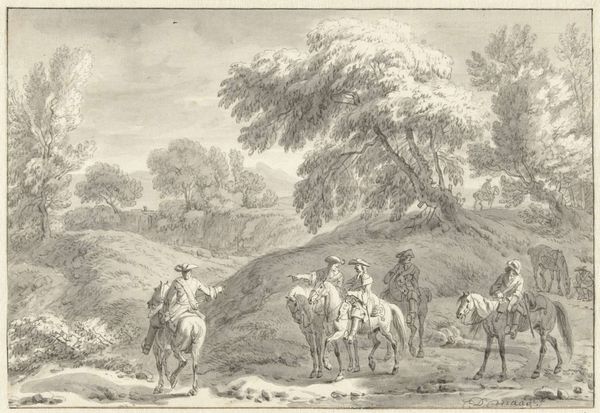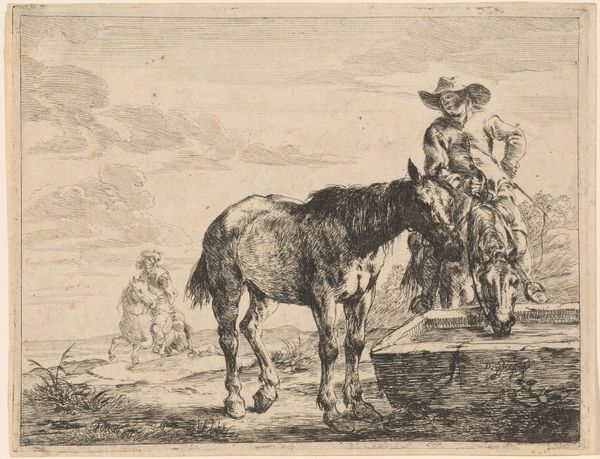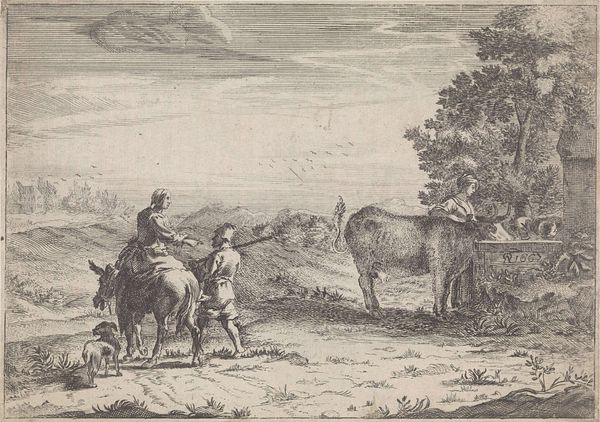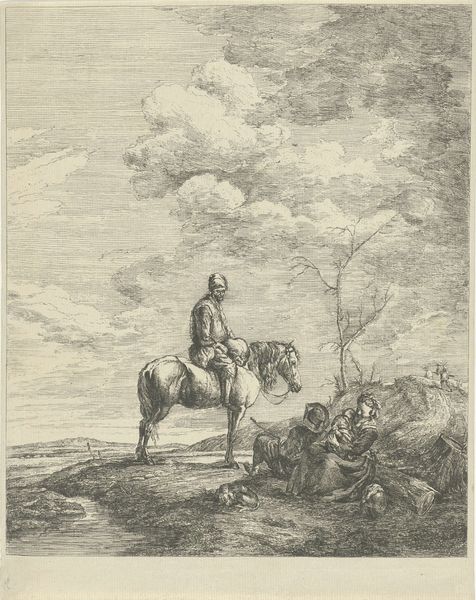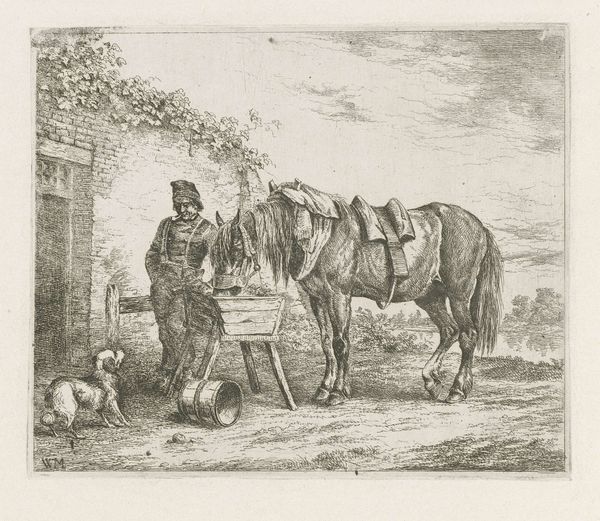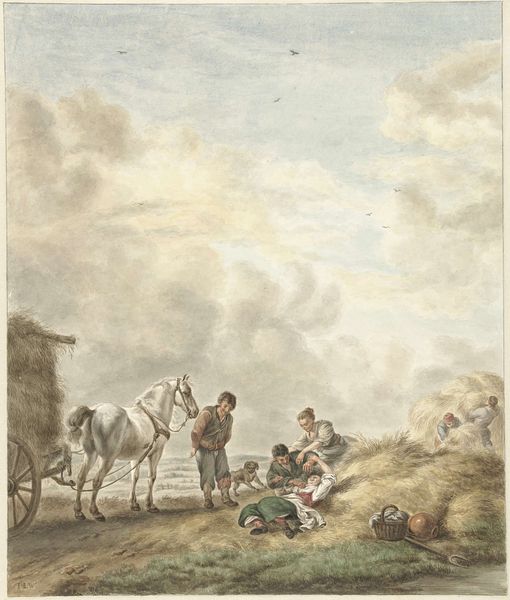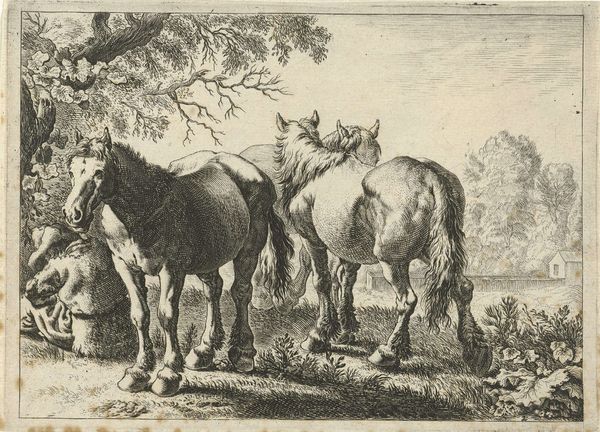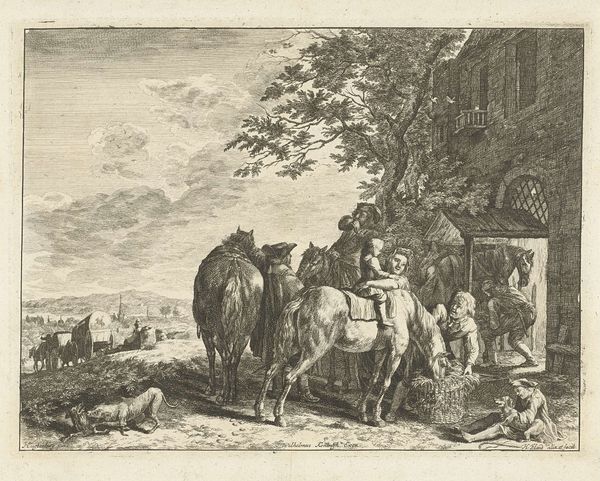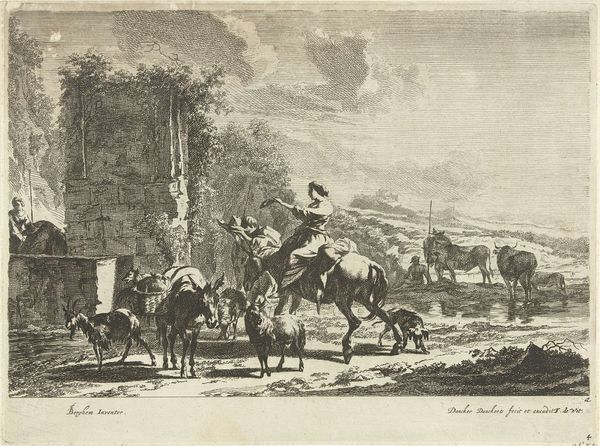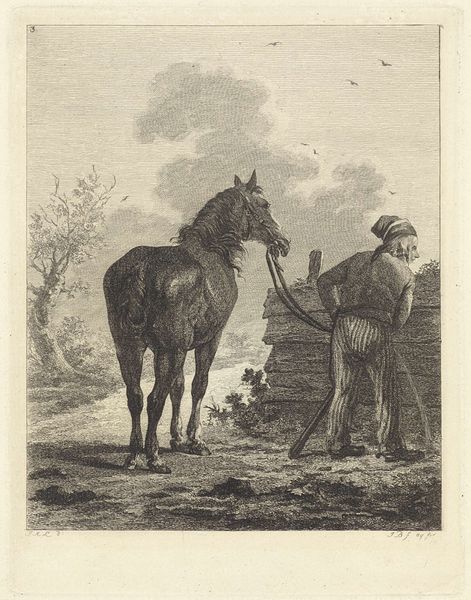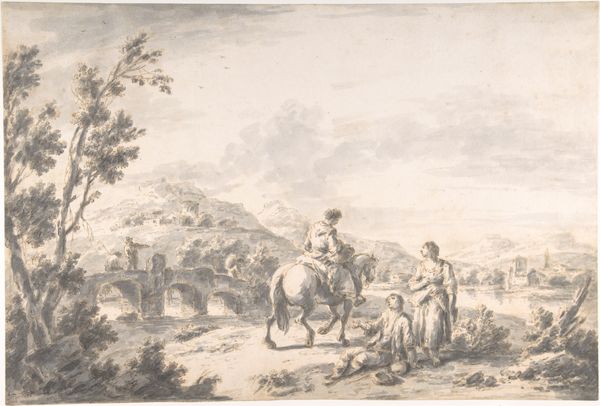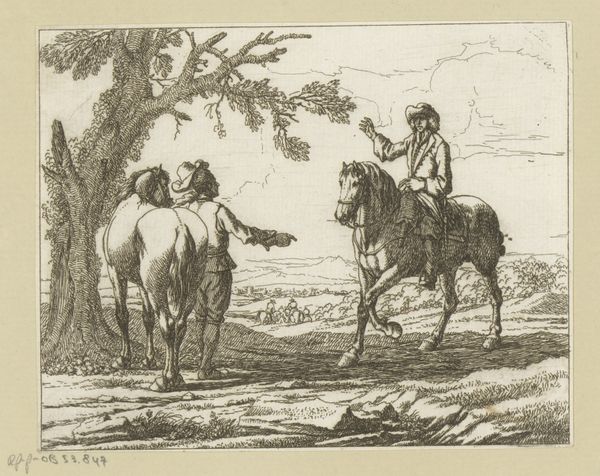
Dimensions: height 304 mm, width 370 mm
Copyright: Rijks Museum: Open Domain
Curator: This delicately rendered pencil drawing is titled “Ruiter in landschap,” or “Horseman in Landscape,” created by Abraham Delfos between 1741 and 1820. It's currently held in the Rijksmuseum's collection. Editor: It's so understated, isn't it? A solitary figure with his horse, some grazing cattle in the distance... There's a feeling of quiet contemplation to it. It almost feels staged, with the picturesque ruin in the background, to set the stage for romanticism. Curator: That ruin is absolutely key! Notice how Delfos juxtaposes the natural world, the landscape teeming with life, with symbols of the past, the ruin as memento mori, as if reflecting on the transience of worldly glory? And the way the horseman gazes, it really focuses our emotional attention on the subject and directs us to his perspective of melancholy. Editor: Absolutely. But that melancholy seems to come from an awareness of societal shifts. Delfos lived through a period of considerable political and social change, right? Doesn’t this scene capture the anxieties of a pre-industrial world giving way to something new? The landscape starts to carry these ideas of lost autonomy of older ways, and nostalgic desires for returning to simple agrarian lifestyles. Curator: Intriguing, isn't it, how a seemingly simple genre scene can carry so much symbolic weight? The horse itself – a symbol of status but also labor. This isn't a king's steed, more likely a working animal that reflects the everyday experience that touches social status but not fully entrenched to aristocracy. Editor: Precisely. And considering the historical context of art production at the time – the rise of landscape painting as a marketable genre and that this is kept as a drawing gives it also a personal appeal. It invites viewers to see it not just as a representation of nature, but as an expression of evolving societal values and political sentiments of landscape art being both personal and public. Curator: So beautifully put. Looking at this drawing then is like gazing into a mirror reflecting the shifting values of an era. Editor: A world on the cusp, captured with such delicate grace. It really resonates, doesn't it?
Comments
No comments
Be the first to comment and join the conversation on the ultimate creative platform.

